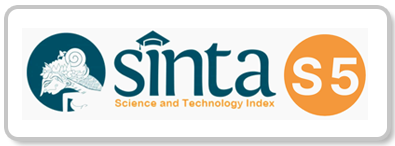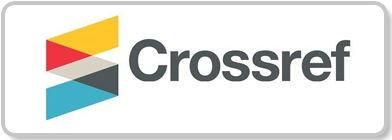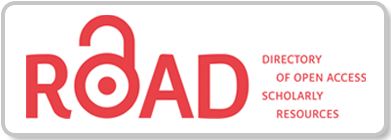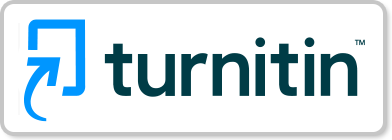Simulasi System Dynamics Kualitas Tanah Terhadap Efisiensi Biaya dan Profit Usaha Tani di Desa Gunungsari
DOI:
 https://doi.org/10.37859/jst.v12i1.9439
https://doi.org/10.37859/jst.v12i1.9439
Abstract
This study evaluates the effectiveness of soil pH enhancement and pesticide-use efficiency on operational costs and the profitability of a sustainable farming system in Gunungsari Village. In this area, rice and maize are cultivated alternately in the first and second planting seasons, heavily reliant on rainfall and irrigation. During the dry season, this dependency shifts to chemical fertilizers and water pumps, leading to a surge in operational expenses. Employing a triple bottom line approach (people, planet, profit), the methodology combines quantitative analysis via SmartPLS to identify dominant sustainability factors with system dynamics simulations in STELLA to test various policy scenarios. SmartPLS results identify soil pH as the most influential factor (44% contribution). Raising soil pH from 5.97 to 6.80 through liming and organic amendments significantly reduces reliance on urea fertilizer, lowering operational costs by 5.36–7.04% and boosting profits by 12.91% (Rice Season 1), 10.27% (Rice Season 2), 14.65% (Maize Season 1), and 13.83% (Maize Season 2). Moreover, a 20–80% increase in pesticide-use efficiency curtails production costs without sacrificing yield, supporting eco-friendly agriculture. This model provides a systemic overview of social, environmental, and economic interactions and informs data-driven policy recommendations for more efficient, adaptive, and sustainable farming.
Downloads
References
Fod. World food and agriculture – statistical yearbook 2023. World Food and Agriculture Statistical Yearbook. 2024. https://doi.org/10.4060/cc8166en
Bandur A. Validitas dan reliabilitas penelitian. Jakarta: Prenadamedia; 2013.
Dwi Yuhenny SM, Suratno S, Widyanto FA, Evianti AR, Vina dkk. Kecamatan Dawarblandong dalam angka 2023. Mojokerto: BPS-Statistics Mojokerto Regency; 2023.
Herlinda YP. Buku pendoman hama penting tanaman utama. Palembang: Universitas Sriwijaya; 2023.
Badan Pangan Nasional. Indeks ketahanan pangan 2022. 2022. https://badanpangan.go.id/storage/app/media/2023/buku%20digital/buku%20indeks%20ketahanan%20pangan%202022%20signed.pdf
Farikhin M, Suratno S, Widyanto FA, Evianti AR, Yania PAN. Kecamatan Dawarblandong dalam angka 2022. Mojokerto: Badan Pusat Statistik Kabupaten Mojokerto; 2022.
Farikhin M, Hartono T, Susanto D. Kecamatan Dawarblandong dalam angka 2021. Mojokerto: Badan Pusat Statistik Kabupaten Mojokerto; 2021.
Program Magister Sistem Informasi. Pengembangan model rantai pasok menggunakan sistem dinamik (studi kasus: minyak goreng di PT Tunas Baru Lampung). 2017;169.
Badan Pangan Nasional. Direktori konsumsi pangan kabupaten/kota tahun 2023 wilayah Jawa, Bali, dan Kalimantan. Jakarta Selatan: Deputi Bidang Penganekaragaman Konsumsi dan Keamanan Pangan; 2023.
Sihombing PR, Arsani AM, Oktaviani M, Nugraheni R, Wijaya L. Aplikasi SmartPLS 4.0 untuk statistisi pemula. 2024 Oct.
Sarasi VDY. Pengantar berfikir sistem dan dinamika sistem. Yogyakarta: Yayasan Sahabat Alam Raffesia; 2021.
Pecenka JR, Ingwell LL, Foster RE, Krupke CH, Kaplan I. IPM reduces insecticide applications by 95% while maintaining or enhancing crop yields through wild pollinator conservation. Proc Natl Acad Sci U S A. 2021;118(44). https://doi.org/10.1073/pnas.2108429118
Sarasi V. Berpikir sistem dan dinamika sistem. 2021 Jan. https://www.researchgate.net/publication/355165945
Stanco M, Lerro M, Marotta G. Consumers’ preferences for wine attributes: a best-worst scaling analysis. Sustainability. 2020;12(7):1–11. https://doi.org/10.3390/su12072819
Downloads
Published
How to Cite
Issue
Section
License
Copyright (c) 2025 Elysaanda Amanda, Hery Murnawan

This work is licensed under a Creative Commons Attribution-NonCommercial-ShareAlike 4.0 International License.





















